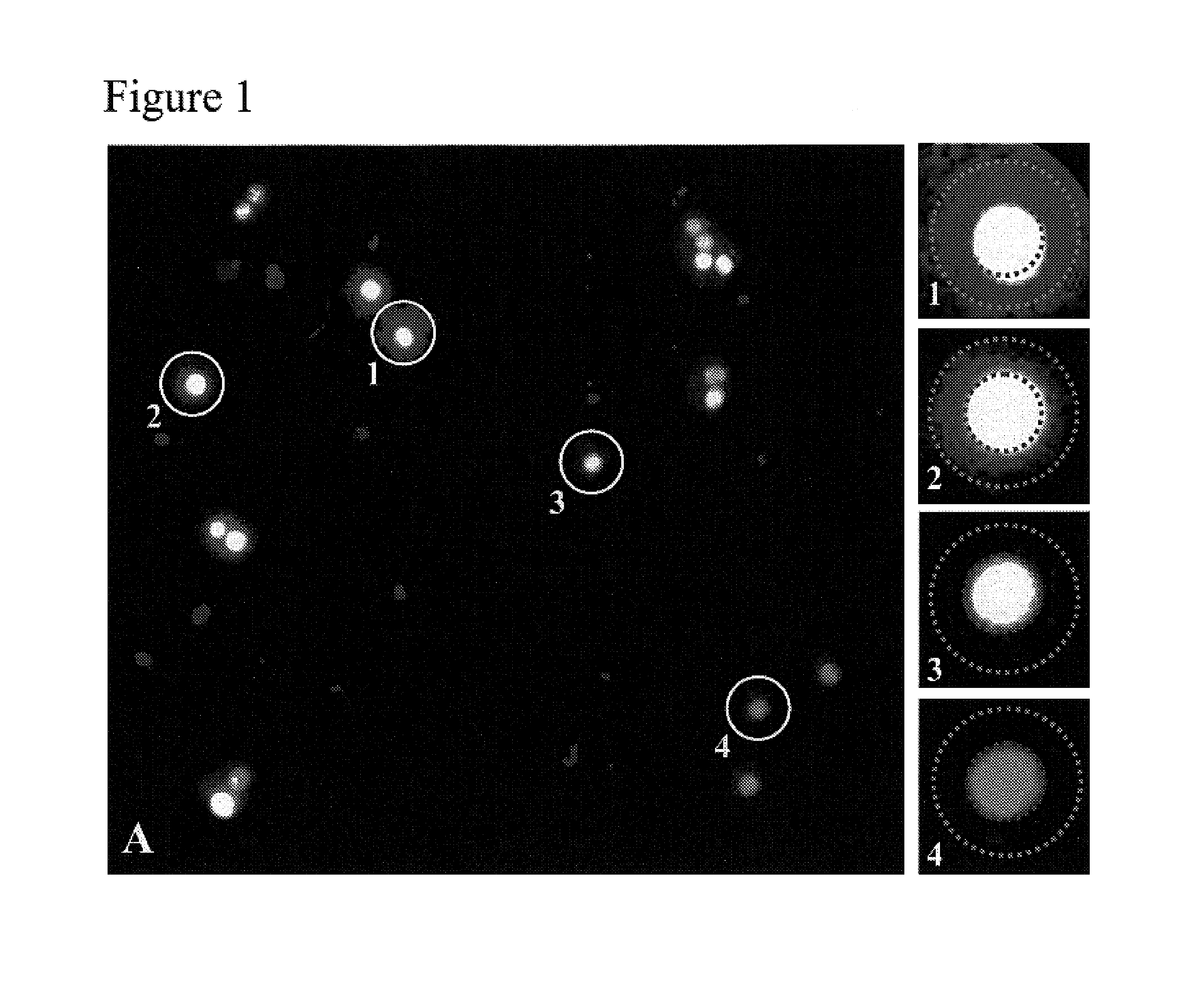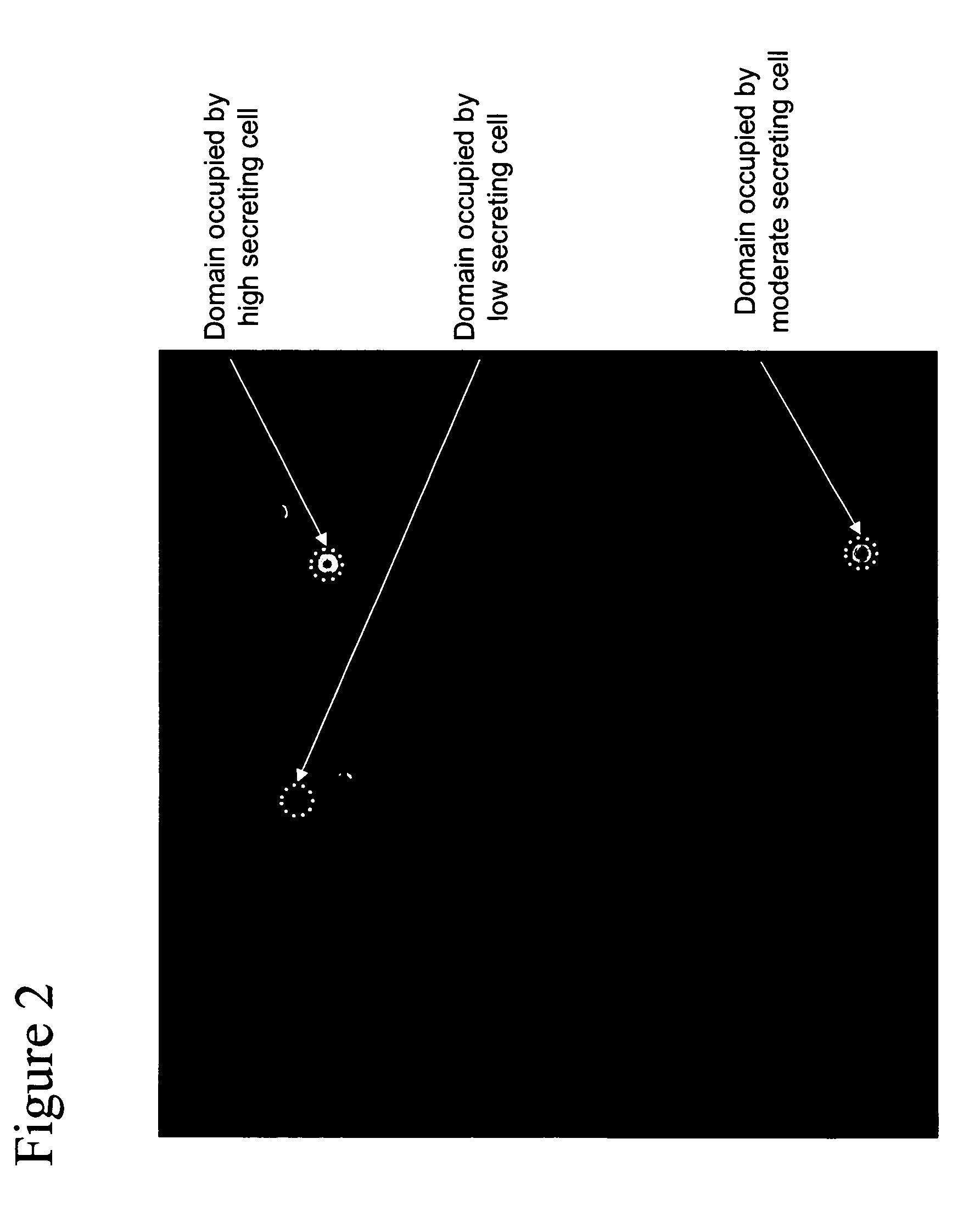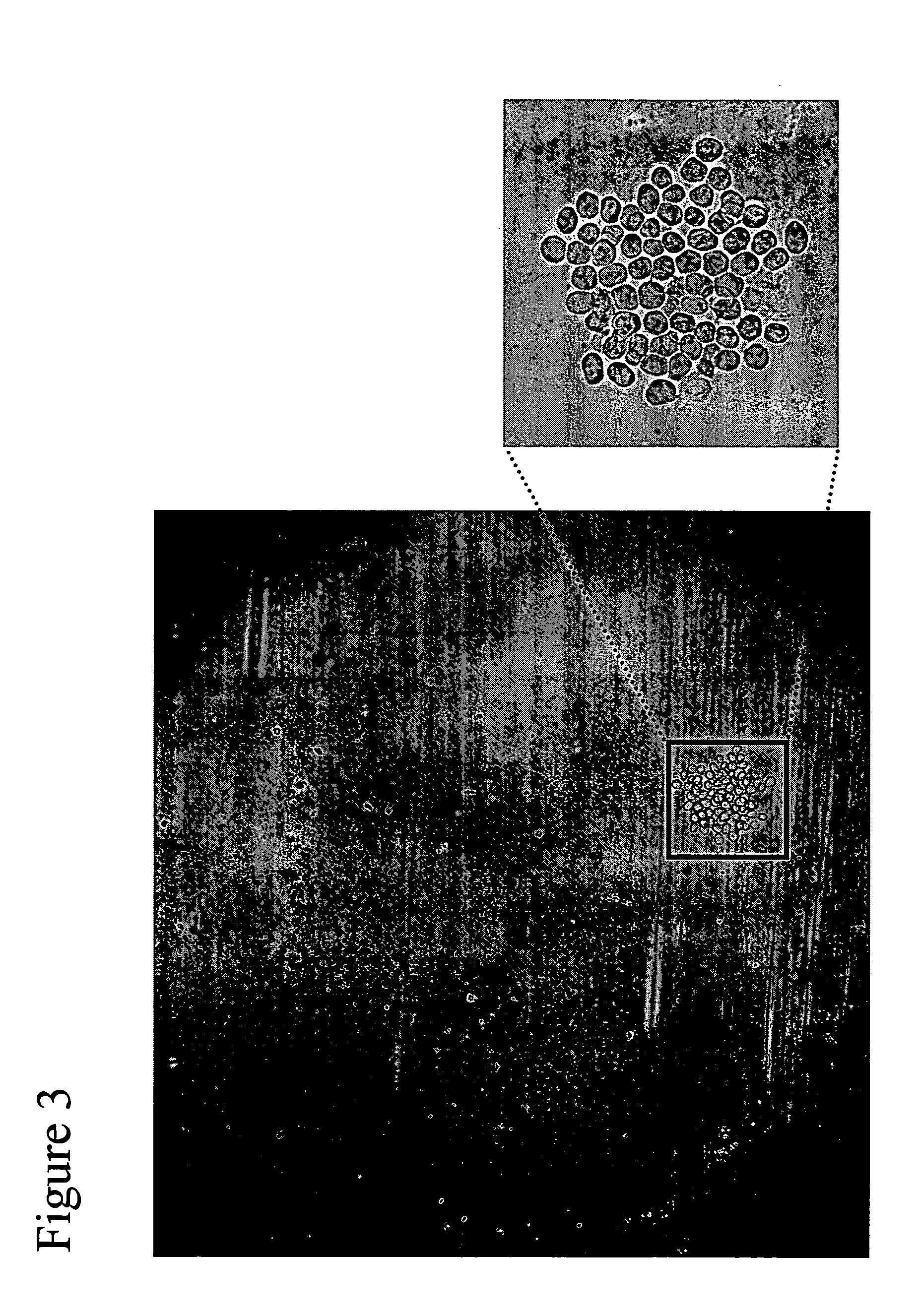Methods for purification of cells based on product secretion
a cell purification and product secretion technology, applied in the field of cell purification, can solve the problems of slow and laborious isolation procedure, low cloning efficiency of cells, slow and laborious process, etc., and achieve the effect of high efficiency
- Summary
- Abstract
- Description
- Claims
- Application Information
AI Technical Summary
Benefits of technology
Problems solved by technology
Method used
Image
Examples
example i
Detection of Individual Cell Product Secretion Based on Detection of Two Properties of Light
[0065]This example describes the capture and detection of antibody secreted by individual hybridoma cells immobilized in proximity to a capture matrix, with identification of substantially all cells, followed by selection of cells with a desired product secretion profile, ranging from zero (i.e., below the level of detection) to high levels.
[0066]UV cross-linking of a 384 well plate (Greiner) was induced by exposure to UV light using the Alpha Imager MultiImage Light Cabinet (Alpha Innotech, San Leandro, Calif.) for 20 minutes on the high (EPI UV) setting. Plates were then rinsed in HBSS (Invitrogen Corporation, Carlsbad, Calif.) to remove debris. Blocking was routinely used between steps, utilizing BSA fraction V (Invitrogen Corporation, Carlsbad, Calif.) for proteins, heat inactivated horse serum (Sigma-Aldrich Co., St. Louis, Mo.) for staining buffers, and heat inactivated FBS (ATCC, Manas...
example ii
Detection of Individual Cell Product Secretion Based on Detection of One Property of Light
[0068]This example describes the capture and detection of antibody secreted by individual hybridoma cells immobilized in proximity to a capture matrix, followed by selection of cells with low to high levels of product secretion and locating of domain areas occupied by-the selected cells.
[0069]A capture matrix within 384 well plates was prepared as described in Example I. Hybridoma cells (172-12A4; ATCC, Manassas, Va.), producing an anti-v-erbB IgG, were added at 200 cells per well in RPMI with 10% FBS. Plates were incubated at 37° C. for 48 hours to allow IgG production and secretion. The agent, as described in Example I, was added to the wells to selectively bind to the produced IgG. After washing, a population of cells was illuminated with 532 nm light for excitation of AlexaFluor-532. Fluorescence was detected in a CCD camera behind a 645 nm filter.
[0070]A representation of the resulting flu...
example iii
Purification of Cells Based on Product Secretion
[0071]This example describes generation of three clonal hybridoma cell lines.
[0072]To select hybridoma cells, the capture matrix, cells, product-binding agent, and methods were as described in Example I, except that the cell-binding agent used was CellTracker™ Orange (Molecular Probes, Eugene, Oreg.). Prior to illumination, Media 199 (Invitrogen Corporation, Carlsbad, Calif.) containing 4 mg / ml FD&C Red 40 (Warner-Jenkinson Company, St. Louis, Mo.) was added in preparation for photo-thermal laser-mediated cell purification. All cells were located by CellTracker Orange fluorescence, and selected cells were located by AlexaFluor 532 fluorescence in the area around each cell, as shown in FIG. 1. The single cell with the highest level of IgG production was selected within each well, and each non-selected cell was irradiated with 10 J / cm2 delivered from a 10 ns pulsed 523 nm semi-conductor laser (Spectra-Physics) using the apparatus describ...
PUM
 Login to View More
Login to View More Abstract
Description
Claims
Application Information
 Login to View More
Login to View More - R&D
- Intellectual Property
- Life Sciences
- Materials
- Tech Scout
- Unparalleled Data Quality
- Higher Quality Content
- 60% Fewer Hallucinations
Browse by: Latest US Patents, China's latest patents, Technical Efficacy Thesaurus, Application Domain, Technology Topic, Popular Technical Reports.
© 2025 PatSnap. All rights reserved.Legal|Privacy policy|Modern Slavery Act Transparency Statement|Sitemap|About US| Contact US: help@patsnap.com



